Products
Products
Infrared imaging microscope
The Nicolet iN10 MX FT-IR imaging microscope from Thermo Fisher Scientific is designed to enable analysts to determine the identity and distribution of chemical species within complex structures and random mixtures on a microscopic scale. Applications range from forensic evidence to high-tech polymer composites. The microscope incorporates the company's OMNIC Picta software. The system can be equipped with as many as three detectors, including a room-temperature detector, a single-element MCT detector, and an optional multielement detector. Thermo Fisher Scientific, Waltham, MA;

Isotopic carbon analyzer
The iTOC-CRDS isotopic carbon analyzer from OI Analytical combines the company's total organic carbon analyzer with a Picarro C1101-I cavity ring-down spectrometer. According to the company, the integrated system enables measurement of the organic carbon, inorganic carbon, or total carbon content of solid or liquid samples along with the delta 13C stable isotope ratio. OI Analytical, College Station, TX;

Raman microscopes
The alpha300 microscopes from WITec are designed for Raman analyses. The alpha300 M microscope is intended for single-point spectrum acquisitions and depth profiling. The alpha300 M+ includes a stepper motor and reportedly allows mapping experiments and large-area investigations. The stepper motor also can be attached to the alpha300 R imaging system. The alpha300 ML features high-resolution confocal Raman mapping. Upgrades and combinations with atomic force or scanning near-field optical microscopy are available. WITec GmbH, Ulm, Germany;

Fusion fluxes
Pure and Ultra Pure fusion fluxes from SPEX CertiPrep are designed with a microbead composition that reportedly eliminates dust that can clog instruments. According to the company, the beads cut down on weighing times and improve consistency. The fluxes are prefused with additives, and every batch reportedly is made to be identical with no lot-to-lot variation. SPEX CertiPrep, Metuchen, NJ;

Double-beam sample compartment
A double-beam sample compartment for Pair Technologies' Pair2 100 Series PA-IR spectrometers enables users to perform analyses with a double-beam system. According to the company, advantages include elimination of the need for purging by cancelling water vapor and carbon dioxide interferences, and the ability to measure very small differences between materials by placing one in the reference beam and the other in the sample beam. Also, the double-beam system allows two polarizers to be used simultaneously. Pair Technologies, LLC, Newark, DE;

Spectroelectrochemical transmission cell
A thin-layer, optically transparent electrode transmission cell from Specac is designed for in-situ FT-IR spectroelectrochemical analysis at temperatures ranging from -50 °C to 70 °C. The demountable cell has a modular design that reportedly fits a range of sample holders. The cell comprises two calcium fluoride windows separated by a 100- or 200-μm sample layer, with gold working and counter electrodes imprinted on the cell window. The air-tight cell has a sample volume of 0.3–0.6 mL and can be used in an evacuated environment. Specac, Inc., Cranston, RI;

Mid-IR hollow waveguide accessory
The FlexIR mid-IR hollow waveguide accessory from PIKE Technologies is intended for FT-IR remote sampling. The accessory is configured with highly reflective hollow waveguides that reportedly cover the mid-IR spectral range with a single probe. ATR and specular and diffuse reflectance probes are available. The accessory is compatible with most FT-IR spectrometers to measure samples that are not conducive to in-compartment sampling due to physical size or chemical properties. PIKE Technologies, Madison, WI;

Benchtop LIBS elemental analyzer
The Insight benchtop LIBS system from Photon Machines is designed for quick, accurate elemental analysis, including the analysis of light elements such as B, Be, Li, and C that are difficult to measure using methods such as XRF. The system can be used for applications such as trace analysis, mineral quantification, and metal alloy analysis. On-board video enables on-sample targeting and building of analysis programs. Software-adjustable spot sizes can be varied from 5 μm to 2 mm. Custom systems are available. Photon Machines, Inc., Redmond, WA;

EDXRF spectrometer
The S2 Ranger energy dispersive X-ray fluorescence (EDXRF) spectrometer from Bruker AXS includes the company's maintenance-free Xflash LE silicon drift detector. The spectrometer has an excitation power of 50 W. The instrument reportedly can measure light elements such as sodium and magnesium. Bruker AXS Inc., Madison, WI;

UV–vis spectrophotometer
Agilent's model 8453 UV–vis spectrophotometer includes a photodiode-array detector to make measurements across 190–1100 nm wavelength range in less than 1 s. The instrument is designed to provide highly repeatable readings. The system also includes the company's UV-Visible ChemStation software for data analysis, data archival, and compliance with pharmacopoeia requirements and good laboratory practices. Agilent Technologies, Inc., Santa Clara, CA;

Mercury analysis application note
An application note from Teledyne Leeman Labs describes the analysis of mercury in cosmetics using a direct mercury analyzer. The note discusses the use of the company's Hydra-C direct mercury analyzer to analyze the cosmetic materials without sample pretreatment or production of hazardous chemical waste. According to the note, the analysis requires 5–10 min and eliminates the need for the chemical digestion step required by other approaches. Teledyne Leeman Labs, Hudson, NH;

Handheld Raman analyzer
BaySpec's 1stGuard handheld Raman analyzer is designed for use by law enforcement and emergency response personnel for quick and accurate identification of unknown chemicals without sample preparation. The battery-operated, ruggedized analyzer reportedly enables users to either build their own spectral library or import spectra from third-party Raman databases. According to the company, the instrument is run by a Windows-based ultracompact computer that allows users to download data or communicate with centralized facilities by WiFi or Bluetooth. BaySpec, Inc., Fremont, CA;

Miniature chemical detector
1st Detect's Miniature Chemical Detector is an ion-trap mass spectrometer designed for field-portable and handheld applications. The instrument, which weighs less than 15 lb, has a mass range of 10–450 amu, a resolution of less than 1 amu, and an analysis time of less than 2 s. Possible applications include industrial process control, security and defense, first response and critical infrastructure analyses, and medical analyses such as point-of-care diagnostics or proteomics. The instrument can be powered by 120/240 VAC, standard UBI-2590 batteries, or by standard 12/24 VDC vehicle power. 1st Detect, Austin, TX;

Miniature NIR spectrometers
The RED-Wave miniature NIR spectrometers from StellarNet are designed for 0.9–2.3 μm wavelengths. The spectrometers reportedly include cooled InGaAs detector photodiode arrays and are available in 512- and 1024-element arrays. Each detector has an integrated thermoelectric cooler maintained at -10 °C. Models are available for applications including chemical identification and moisture analysis, spectroradiometry, radiant power measurements, laser characterization, and thicker thin-film measurements. StellarNet, Tampa, FL;
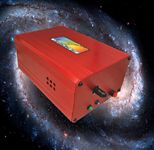
DPSS laser
The SLIM-550 DPSS laser from Oxxius reportedly is the first yellow–green DPSS laser, emitting up to 200 mW at 553 nm. According to the company, the laser has a linewidth of less than 1 MHz, optical noise of less than 0.2% rms, pointing stability of less than 5 μrad, and power consumption as low as 10 W. Applications include Raman spectroscopy, holography, laser Doppler velocimetry, and fluorescence spectroscopy. Oxxius, Lannion, France;
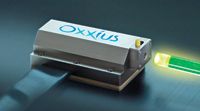
Inorganic standards catalog
Inorganic Ventures' 2010–2011 catalog of inorganic reference materials includes standards for ICP, ICP-MS, IC, AA, and wet chemistry applications. Standards are color-coded by application and indexed by catalog number and subject. Inorganic Ventures, Christiansburg, VA;

Fiber-optic accessories
The Omni-Diff and Omni-Spec diffuse and specular reflection fiber-optic accessories from Harrick Scientific connect via 1.5-m cables to the company's FiberMate 2 interface installed in a spectrometer. According to the company, selection of the appropriate fiber cables allows operation in wavelength regions ranging from UV to the mid-infrared. An optional USB-compatible camera is available. Harrick Scientific Products, Pleasantville, NY;

FT-IR brochure
A 20-page online brochure from Varian describes the company's 600-IR series instrumentation for FT-IR analysis. "Solutions for Polymers and Materials" lists various applications for the instruments, including the analysis of raw materials, surface modification and reaction dynamics, and sample heterogeneity and contaminant identification. Full-color figures illustrate each section. A cross-sectional diagram shows the various components of the instruments. The brochure can be accessed at www.varianftir.com/ebrochure-pm.html. Varian, Inc., Walnut Creek, CA;

Knife mill
Retsch's GM 300 knife mill is designed for the sample preparation of foodstuffs. The mill has a 4.5-L capacity and a 1.1-kW motor. According to the company, the mill can be used with samples having high water, oil, or fat content, including frozen french fries, pizza, and gummy candies. The mill's grinding chamber and knife can be removed without tools, and all components that come in contact with the sample can be removed and autoclaved. The mill's speed can be adjusted for preliminary or fine size reduction throughout the 500–5000 min-1 range. A digital display can store as many as 10 parameter combinations. Retsch, Inc., Newtown, PA;

Si-PIN detector
The XPIN Si-PIN detector from MOXTEK is intended for use in benchtop and handheld energy dispersive X-ray fluorescence instrumentation. The detector reportedly is optimized to provide maximized resolution, count rate, energy absorption, and peak-to-background for industrial and scientific applications. According to the company, the detector has a 625-μm-thick Si-PIN diode, an ultralow-noise JFET, a multilayer collimator, a preamplifier, and a two-stage thermoelectric cooler. The detector's 8-μm windows are coated to resist corrosion and harsh environments. The detector is available with a 6-mm2 or 13-mm2 active area. MOXTEK, Inc., Orem, UT;

Cuvette holder
The CUV-DHC-XE-LED-DA cuvette holder with attenuator from Avantes is designed for use with the company's xenon and LED light sources. By attaching the cuvette holder directly to the light source, users reportedly eliminate the need for an extra fiber. According to the company, the holder improves the light throughput by a factor of 200 in the UV range and 60 in the NIR-vis range. The holder is intended for use with 10 × 10 mm cuvettes and is equipped with a 5-mm slot for filters. Avantes, Inc., Broomfield, CO;
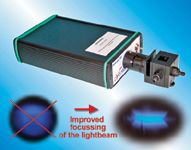
Raman system for inverted microscopy
The XploRA INV compact analytical Ramam chemical imaging microscope from HORIBA Scientific reportedly combines the automatization features and small footprint of a standard confocal Raman microscope with the capabilities of an inverted microscope for biological applications such as cell research, cancer detection, pharmaceutical verification of intercellular activities, inclusion of microreactors, and incorporation of AFM units for tip-enhanced Raman spectroscopy. According to the company, the microscope's open structure permits the use of options and add-ons for inverted microscopes, such as micromanipulators, "optical tweezers," and specific enclosures for cell applications. HORIBA Scientific, Edison, NJ;

FT-IR software
CAMO Unscrambler software from Shimadzu Scientific Instruments is designed for multivariate analysis of FT-IR data. The software includes methods for PCA, multivariate curve resolution, PLS regression, three-way PLS regression, clustering (K-Means), SIMCA, and PLSDA classification. According to the company, multivariate quantitation and other statistical data analyses are required in nutraceuticals, pharmaceuticals, and food technology. Shimadzu Scientific Instruments, Inc., Columbia, MD;

Dual-wavelength Raman microscope
The BAC151A portable dual-wavelength Raman microscope from B&W Tek features the ability to perform micro-Raman analysis with the company's 785-nm or 532-nm fiber probe-based Raman systems. The microscope reportedly holds as many as four objectives, an integrated camera for targeting, and LED illumination of samples with precision XYZ positioning. According to the company, a universal mounting bracket allows the microscope head to be detached and mounted on a standard tripod. B&W Tek, Inc., Newark, DE;

UV-vis spectrophotometer
The Evolution Array UV-vis spectrophotometer from Thermo Fisher Scientific is designed with a photodiode array for fast acquisition of full-spectrum UV-vis data in QA/QC, pharmaceutical, life science, materials science, and educational laboratories. The spectrophotometer reportedly provides simultaneous detection of all UV-vis wavelengths in the 190–1100 nm region. According to the company, users can create standard curves, plot 3D graphical displays, and examine samples at any wavelength at any time. A mechanical shutter reportedly is the only moving part. Thermo Fisher Scientific, Waltham, MA;
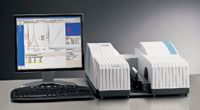
Ratio beam spectrophotometer
The U-5100 ratio beam spectrophotometer from Hitachi is designed for applications ranging from teaching to routine QC, biotech, and environmental testing. The system has a wavelength range of 190–1100 nm, a spectral bandwidth of 5 nm, and LCD screen dimensions of 120 mm × 90 mm. According to the company, it can perform photometry, wavelength scan, time scan, and absorbance ratio measurements. The spectrophotometer includes a six-position automatic cell changer. Hitachi High Technologies America, Inc., Pleasanton, CA;
www.hitachi-hta.com/spectroscopy

Cell cleaning agent
HELLMANEX II alkaline concentrate from Hellma is intended for use in cleaning cells and optical components. The concentrate is used at a maximum dilution of 2%, and the ingredients reportedly include no corrosive substances. The phosphate-based cleaning agent is available in 0.5- and 1-L bottles. According to the company, the cleaning agent provides optimum wetting of all surfaces. Hellma USA, Inc., Plainview, NY;

Mercury analyzer
The model RA-3000 Gold+AFS mercury analyzer from Nippon Instruments is designed for EPA Method 1631E. According to the company, the analyzer simplifies low- to sub-parts-per-million mercury analysis and reduces reagent consumption and wastes. Nippon Instruments North America, College Station, TX;

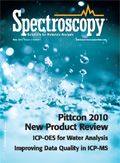
Best of the Week: AI and IoT for Pollution Monitoring, High Speed Laser MS
April 25th 2025Top articles published this week include a preview of our upcoming content series for National Space Day, a news story about air quality monitoring, and an announcement from Metrohm about their new Midwest office.
LIBS Illuminates the Hidden Health Risks of Indoor Welding and Soldering
April 23rd 2025A new dual-spectroscopy approach reveals real-time pollution threats in indoor workspaces. Chinese researchers have pioneered the use of laser-induced breakdown spectroscopy (LIBS) and aerosol mass spectrometry to uncover and monitor harmful heavy metal and dust emissions from soldering and welding in real-time. These complementary tools offer a fast, accurate means to evaluate air quality threats in industrial and indoor environments—where people spend most of their time.